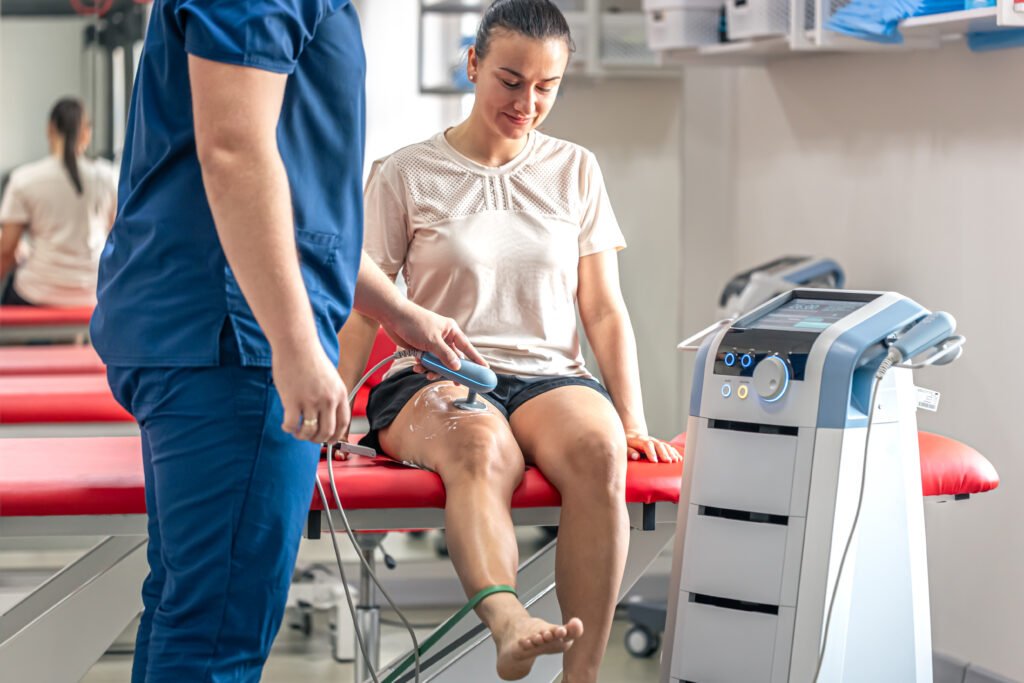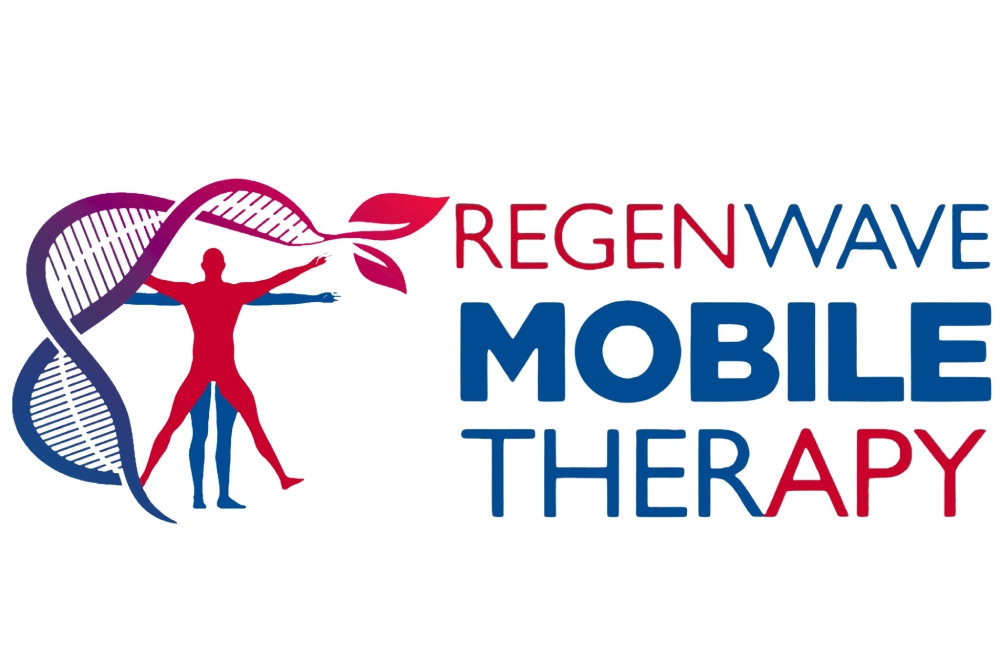
Aging gracefully comes with its fair share of challenges, especially when it comes to managing chronic pain. Many seniors struggle with conditions like arthritis, joint pain, and tendonitis, making daily activities difficult and impacting their quality of life. Traditional pain management options often include medications, physical therapy, or even surgery—but what if there was a non-invasive, drug-free alternative that could help?
Enter mobile shockwave therapy, an innovative solution that brings the power of shockwave therapy at home for seniors who want relief without the hassle of clinic visits. In this blog, we explore how at-home shockwave therapy is transforming pain management for seniors and whether it might be the right choice for you or your loved one.
Understanding Chronic Pain in Seniors
As we age, our bodies naturally undergo changes that can lead to increased pain and discomfort. Common causes of chronic pain in seniors include:
- Osteoarthritis: Wear and tear on the joints over time leads to inflammation, stiffness, and difficulty with movement. This condition is especially common in the knees, hips, and hands.
- Tendonitis: Chronic inflammation of tendons can cause pain in areas like the shoulders, elbows, and knees, making daily tasks such as lifting objects or even simple movements painful.
- Plantar Fasciitis: Foot pain caused by overuse, improper footwear, or weakened connective tissue. Seniors who experience foot pain often find it challenging to walk or stand for extended periods.
- Sciatica: Nerve pain that radiates from the lower back down the leg, often caused by pressure on the sciatic nerve due to herniated discs or spinal issues.
- Frozen Shoulder: Limited mobility and stiffness due to inflammation in the shoulder joint, which can be particularly frustrating for seniors who rely on their upper body for daily activities.
- Lower Back Pain: A common issue in older adults due to degenerative changes in the spine, leading to chronic discomfort and reduced flexibility.
Pain management strategies typically involve over-the-counter medications, prescription drugs, or physical therapy. However, long-term reliance on medication can lead to side effects, while surgery is often risky for older adults. This is where shockwave therapy presents a compelling alternative.
What Is Shockwave Therapy?
Shockwave therapy is a non-invasive treatment that uses acoustic waves to stimulate healing in damaged tissues. Originally developed for breaking up kidney stones, it has since been adapted for orthopedic and pain management purposes. The treatment works by:
- Increasing blood circulation to promote healing and tissue regeneration.
- Stimulating the body’s natural regenerative processes, accelerating recovery.
- Breaking down calcified tissue that causes pain and stiffness in joints and tendons.
- Reducing inflammation and improving mobility by targeting the root cause of discomfort.
- Triggering the release of endorphins, which naturally alleviate pain without medication.
For seniors looking for a drug-free and surgery-free way to relieve pain, mobile therapy specialists now offer physical therapy mobile services that bring shockwave therapy directly to their homes. This convenient approach ensures that seniors receive effective treatment without the hassle of traveling to a clinic.
Benefits of At-Home Shockwave Therapy for Seniors
1. Convenience and Accessibility
One of the biggest advantages of shockwave therapy is that it eliminates the need for frequent clinic visits. Many seniors have mobility limitations, making it difficult to travel for appointments. Mobile physical therapy services ensure that seniors receive high-quality care without leaving their homes.
2. Non-Invasive and Drug-Free Pain Relief
Unlike pain medications, which come with potential side effects such as drowsiness, nausea, or dependency, shockwave therapy provides a natural way to manage pain. It also helps seniors avoid the risks associated with surgery, such as infections, long recovery times, and post-surgical complications.
3. Faster Recovery and Improved Mobility
Shockwave therapy helps break down scar tissue and improve blood flow, allowing seniors to regain movement and flexibility more quickly. Whether it’s knee pain, shoulder pain, or plantar fasciitis, patients often see significant improvements within a few sessions. This can lead to enhanced independence and a more active lifestyle.
4. Safe and Effective for Various Conditions
Research supports the effectiveness of physical therapy services using shockwave therapy for treating conditions like osteoarthritis, sciatica, and tendonitis. Because the treatment is non-invasive, it carries minimal risks and can be customized based on a senior’s specific needs.
5. Enhanced Quality of Life
Chronic pain can lead to reduced physical activity, social isolation, and even depression. By alleviating pain and improving mobility, therapy specialists help seniors maintain their independence and enjoy a more active lifestyle. Seniors who engage in regular physical activity experience improved mental well-being, better cardiovascular health, and stronger muscles to support aging joints.
What to Expect from Mobile Shockwave Therapy
If you’re considering shockwave therapy, here’s what a typical session looks like:
- Initial Assessment: A professional physical therapy provider will assess your condition, medical history, and pain levels. This consultation helps determine the appropriate treatment plan.
- Treatment Session: A handheld device delivers acoustic waves to the affected area. The procedure usually lasts 15-30 minutes and is relatively painless, though some patients may feel mild discomfort depending on the severity of their condition.
- Post-Treatment Recommendations: Patients are given guidance on aftercare, including gentle exercises to maximize results. This may include stretches, mobility exercises, and ergonomic adjustments to prevent future pain.
- Follow-Up Sessions: Most seniors require multiple sessions (typically 3-5) to experience full benefits. Some may notice immediate relief, while others see gradual improvements over a few weeks.
Because the treatment is non-invasive, there’s no downtime, and most patients can resume their normal activities immediately after a session.
Who Can Benefit from At-Home Shockwave Therapy?
Shockwave therapy is suitable for seniors experiencing:
- Chronic joint pain or stiffness that affects daily life.
- Tendon and ligament injuries due to aging or repetitive stress.
- Reduced mobility caused by inflammation or musculoskeletal conditions.
- Pain from repetitive strain injuries such as carpal tunnel syndrome.
- Plantar fasciitis or foot pain that makes walking uncomfortable.
However, individuals with certain medical conditions, such as blood clotting disorders or pacemakers, should consult their healthcare provider before starting treatment.
Is Shockwave Therapy the Right Choice for You?
If you’re a senior or caring for an elderly loved one,shockwave therapy could be a game-changer for pain relief and improved mobility. The ability to receive mobile physical therapy near me services without the hassle of traveling to a clinic makes this treatment even more attractive.
At RegenWave Therapy, we specialize in mobile shockwave therapy, providing personalized care in the comfort of your home. Our team of mobile therapy specialists is dedicated to helping seniors regain mobility, reduce pain, and enhance their quality of life.
Ready to Experience Pain-Free Living?
Don’t let chronic pain hold you back. Explore how at-home shockwave therapy can transform your life. Visit RegenWave Therapy to learn more and schedule your consultation today!
Frequently Asked Questions
Shockwave therapy uses acoustic waves to stimulate tissue repair, reduce inflammation, and improve blood circulation, helping seniors manage chronic pain effectively.
Yes, at-home shockwave therapy is non-invasive and safe for most seniors. However, those with pacemakers or blood clotting disorders should consult their doctor first.
Most seniors require 3-5 sessions for noticeable pain relief, though some may experience improvement after just one session, depending on their condition.
Side effects are minimal and may include mild discomfort, redness, or swelling in the treated area, which usually subsides within a few hours.
Yes, shockwave therapy is effective in reducing arthritis-related pain by promoting blood flow and breaking down calcifications in affected joints.
A typical session lasts 15-30 minutes, depending on the area being treated and the severity of the condition.
Coverage varies by provider and policy. It’s best to check with your insurance company to see if shockwave therapy is included in your plan.

